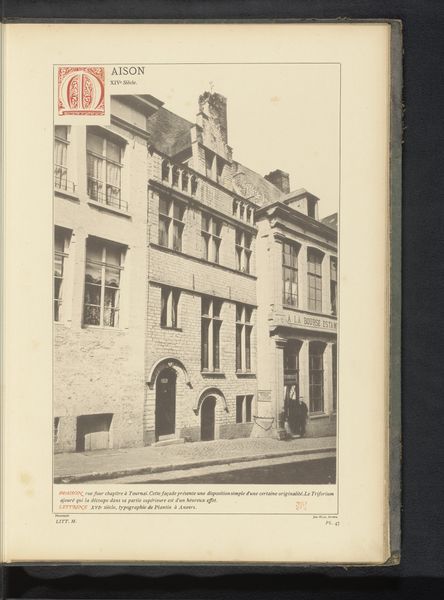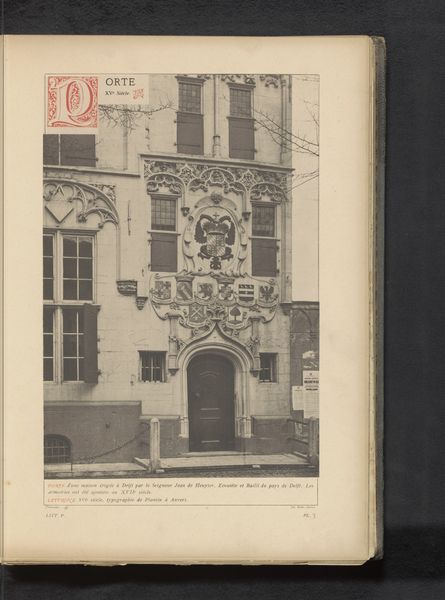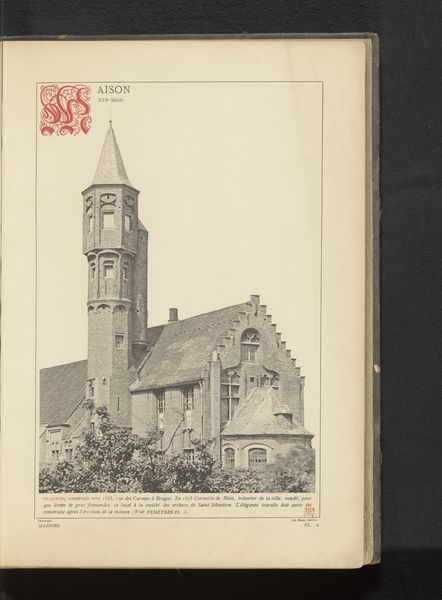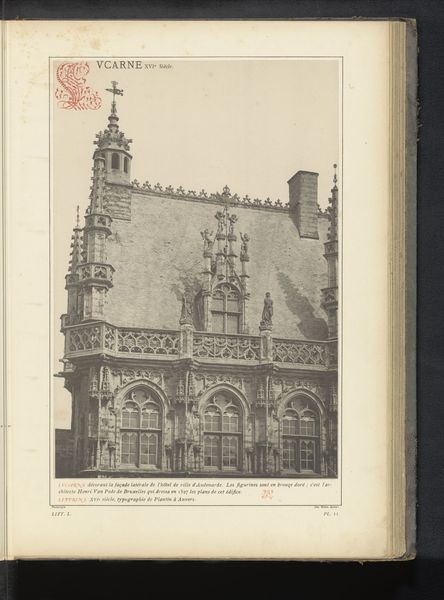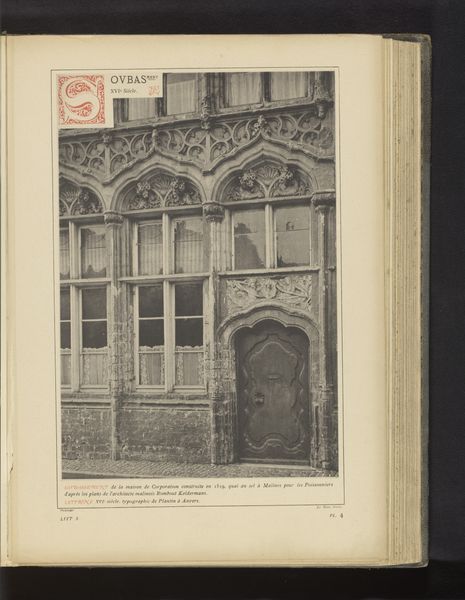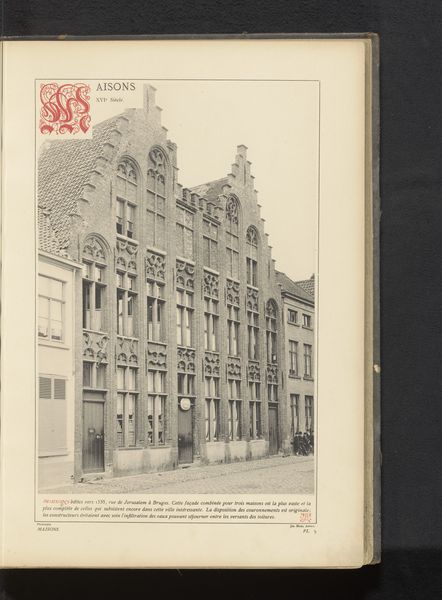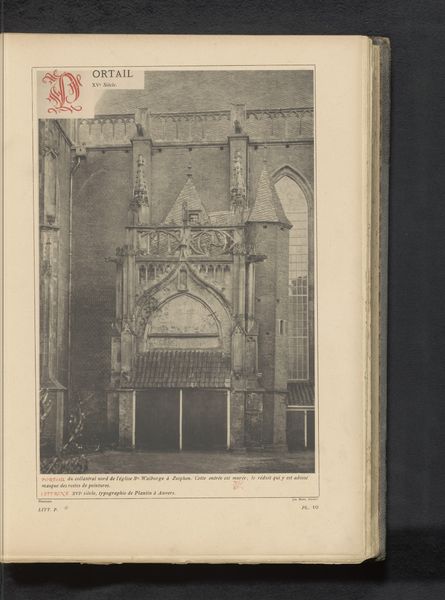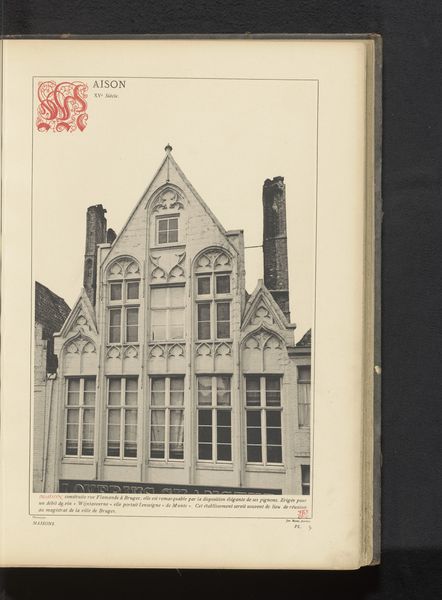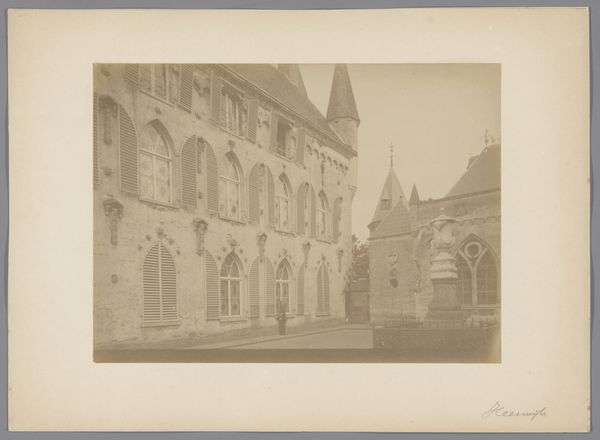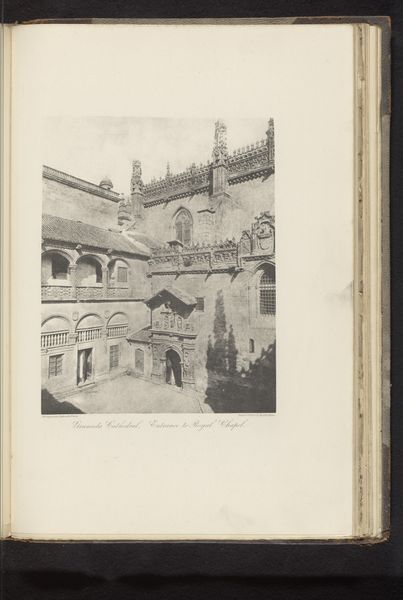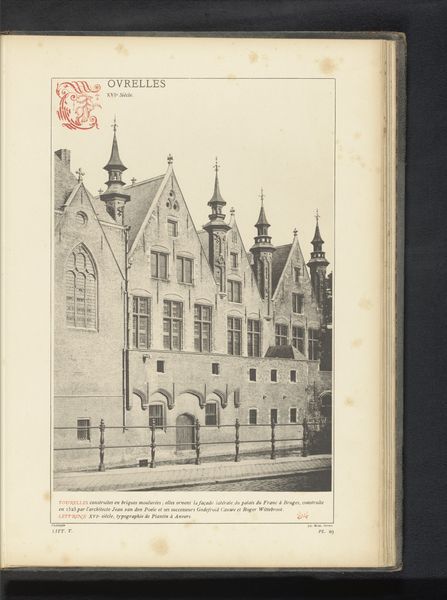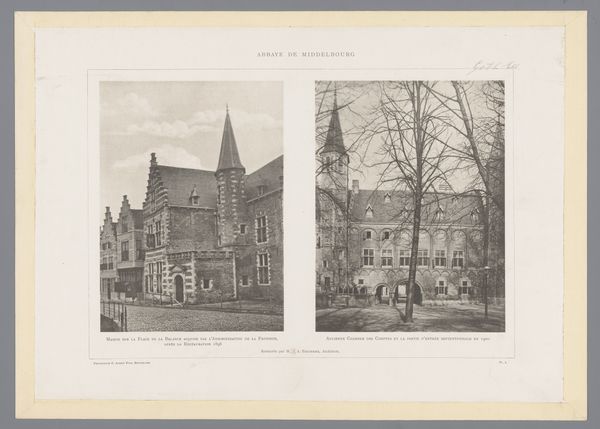
print, etching, photography, architecture
#
medieval
# print
#
etching
#
photography
#
cityscape
#
northern-renaissance
#
architecture
#
realism
Dimensions: height 344 mm, width 235 mm
Copyright: Rijks Museum: Open Domain
Editor: This etching, titled "Façade van een gebouw te Brugge," meaning Façade of a building in Bruges, predates 1889 and is credited to an anonymous artist. I am immediately struck by the intricate detail of the brickwork and the variations in window design. How do you interpret this work purely from a formal perspective? Curator: What arrests me is the artist's manipulation of line and texture to create depth. Notice how the sharp, precise lines defining the window frames contrast with the softer, more granular textures representing the aged brick. Consider how this interplay shapes our perception of the building's solidity and the implied weight of the materials. The print also possesses an inherent flatness; how might you argue the image either fails at or excels at creating volume? Editor: It almost seems like the artist uses varying degrees of detail to pull forward and push backward elements within the image, particularly with the foreground wall being the darkest, thereby more evidently in front, and the more distant segments showing lighter tones that suggest distance, so the visual succeeds. I notice the windows on the far right seem partially cut off by the image. Does the limited view influence how we're meant to see this building? Curator: Precisely. The cropping forces us to consider the façade not as an isolated entity, but as a fragment within a larger urban tapestry. The formal arrangement becomes paramount: how the lines of the unseen continue into the viewer's imagination, extending the building beyond the printed page. Look at the stark geometric forms, almost constructivist. This provides a visual language. How would you say this "language" relates to others emerging in avant-garde practices in painting at that time? Editor: So the realism serves as almost a foundation to abstraction to come! I suppose I was too focused on it just being an architectural study. Curator: An insightful conclusion. By studying the formal components, one might learn a fresh, if unexpected, appreciation of artistic composition, rather than literal recording.
Comments
No comments
Be the first to comment and join the conversation on the ultimate creative platform.
